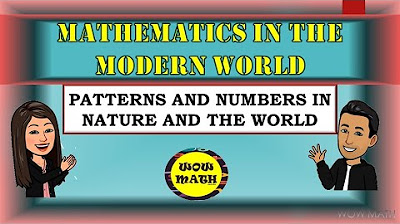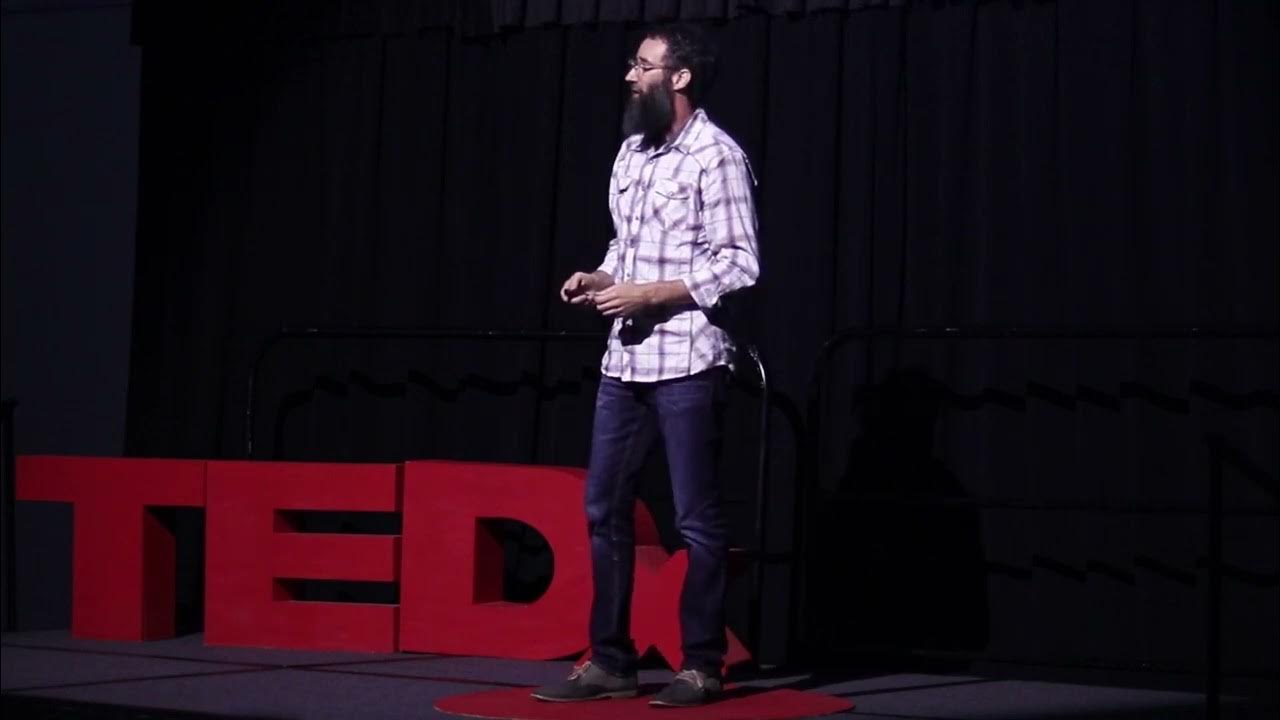Painted with numbers: mathematical patterns in nature
Summary
TLDRThis video explores the profound connection between mathematics and the natural world, demonstrating how mathematical patterns govern everything from flower petals to honeycomb structures. It delves into Fibonacci numbers, geometric shapes, and the role of mathematics in music and nature. The script also highlights historical contributions from figures like Galileo and Pythagoras, showcasing how mathematical equations describe the universe. The video culminates in the idea that mathematics is a universal language, shaping both the physical world and our understanding of its beauty and complexity.
Takeaways
- 🎨 The beauty of nature can be described using numbers and equations, just as artists use paint and canvas.
- 🌼 Fibonacci numbers are a recurring pattern in nature, seen in flowers, pinecones, and even the growth of snails' shells.
- 🐝 The hexagon shape in honeycombs is mathematically proven to be the most efficient structure for maximizing storage with minimal material.
- 🎶 Music shares deep connections with mathematics, particularly in the harmony of notes, as discovered by Pythagoras.
- 🔢 Mathematics allows us to understand the natural world, as seen in Galileo's studies on falling objects and motion.
- ⚽ Calculating the trajectory of a soccer ball involves complex equations, some of which players subconsciously solve during play.
- 🌌 The universe can be described using mathematical principles, leading many to believe that mathematics is the language of the divine.
- 🔭 Galileo believed that the laws of nature could be expressed through mathematical symbols like circles and triangles.
- ⚛️ Famous mathematical equations, such as those governing electromagnetic waves and quantum entanglement, are key to understanding how the universe operates.
- 📚 Bertrand Russell viewed mathematics as constructing a perfect world, and many scientists believe the ultimate laws of the universe will be written in mathematical equations.
Q & A
How does the script compare mathematics to art?
-The script suggests that mathematics can be as beautiful as art. While painters like Van Gogh, Monet, and Renoir use paint and canvas, mathematicians use numbers and equations to depict the world, from atomic movements to galaxy formations, creating a mathematical 'painting' of the universe.
What are Fibonacci numbers, and how do they relate to nature?
-Fibonacci numbers are a sequence where each number is the sum of the two preceding ones, such as 5, 8, 13, and 21. In nature, these numbers appear frequently, such as in the number of flower petals, the arrangement of seeds in an apple, and spirals on pinecones or pineapples.
How do snails use Fibonacci numbers in building their shells?
-Snails build their shells by adding rooms, each based on the size of the previous two. This method mirrors the Fibonacci sequence, resulting in a spiral pattern that is both mathematically and naturally efficient.
Why do bees build their honeycombs using hexagons, according to the script?
-The script explains that the hexagonal shape of the honeycomb is the most efficient for maximizing storage space while minimizing the use of materials like wax. Mathematicians have proved that hexagons provide the optimal way to cover a surface with equal area using the least perimeter.
What connection does the script draw between mathematics and music?
-The script highlights that both music and mathematics rely on patterns and structures. Pythagoras discovered that harmonious musical notes are related to whole number ratios, showing a direct link between numbers and the harmony in music.
What did Pythagoras discover about the relationship between sound and numbers?
-Pythagoras discovered that harmonious sounds are created when the weights of anvils or the lengths of strings are in simple whole-number ratios, establishing a mathematical basis for harmony in music.
How does Galileo’s work connect mathematics to the natural world?
-Galileo demonstrated that mathematics could describe physical phenomena, such as the rate at which objects fall. He formulated equations, like distance proportional to time squared, to explain motion and provided one of the earliest examples of using math to model the natural world.
What does the script say about how mathematics is embedded in everyday actions, such as sports?
-The script illustrates that even everyday actions like kicking a football involve complex mathematical equations, whether the person is conscious of it or not. For example, the trajectory, velocity, and drag of the ball can all be described mathematically.
Why is the universe often described as 'painted with numbers' in the script?
-The universe is described as 'painted with numbers' because mathematical equations are deeply embedded in how the world operates. From the growth of plants to the trajectory of a ball, math provides the underlying rules governing natural and physical phenomena.
How does the script suggest that mathematics contributes to a sense of beauty or divinity in the world?
-The script implies that the elegance and precision of mathematical equations inspire a sense of beauty, and for some, a sense of the divine. As Bertrand Russell noted, mathematics constructs an ideal world, which is perfect and helps explain the mysteries of the universe.
Outlines

This section is available to paid users only. Please upgrade to access this part.
Upgrade NowMindmap

This section is available to paid users only. Please upgrade to access this part.
Upgrade NowKeywords

This section is available to paid users only. Please upgrade to access this part.
Upgrade NowHighlights

This section is available to paid users only. Please upgrade to access this part.
Upgrade NowTranscripts

This section is available to paid users only. Please upgrade to access this part.
Upgrade NowBrowse More Related Video

BBC Documentary The Math Mystery Mathematics in Nature and Universe Science Documentary

Nature's Numbers By: Ian Stewart (Chapter 2: WHAT MATHEMATICS IS FOR?)

Math in the Modern World Module 1 - Nature of Mathematics

Nature's Numbers

PART 3: PATTERNS AND NUMBERS IN NATURE AND THE WORLD || MATHEMATICS IN THE MODERN WORLD

Patterns In Nature | Maury Covington Jr. | TEDxCSUF
5.0 / 5 (0 votes)